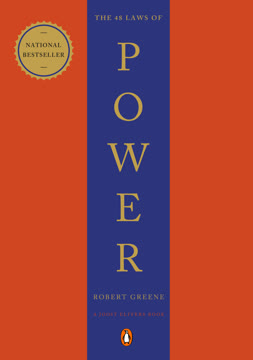Key Takeaways
1. Analyze behavior patterns to uncover motivations and predict actions
"To understand why people behave as they do, we need to examine the causes and drivers of that behavior: their motivations."
Underlying motivations. Human behavior is driven by complex psychological, social, and biological factors. By understanding these motivations, we can better predict and interpret actions. Key motivational theories include:
- The pleasure principle: People seek pleasure and avoid pain
- Maslow's hierarchy of needs: Physiological, safety, love/belonging, esteem, self-actualization
- Defense mechanisms: Ways people protect their ego and self-esteem
Practical application. To analyze motivations:
- Observe patterns of behavior over time
- Look for discrepancies between stated intentions and actions
- Consider how past experiences and beliefs influence current choices
- Identify which needs the person is trying to fulfill through their actions
2. Observe facial expressions and body language for deeper insights
"The body doesn't lie!"
Microexpressions. These brief, involuntary facial expressions can reveal hidden emotions:
- Happiness: Lifted cheeks, raised lip corners
- Sadness: Drooping outer eyes and mouth corners
- Anger: Lowered brows, tightened eyes and lips
- Fear: Raised brows, widened eyes, tense mouth
- Surprise: Elevated brows, wide eyes, open mouth
Body language cues. Nonverbal communication provides valuable information:
- Posture: Open and expansive vs. closed and protective
- Gestures: Pacifying behaviors indicate stress or discomfort
- Eye contact: Degree and duration can signal interest or deception
- Proxemics: Use of personal space reveals comfort levels
Remember to consider clusters of behaviors and context, rather than isolated gestures, for more accurate interpretations.
3. Recognize personality types to better understand individual traits
"Personality can be thought of as a persistent pattern of behavior over the long term."
Personality models. Several frameworks help categorize personality traits:
-
Big Five (OCEAN):
- Openness to experience
- Conscientiousness
- Extraversion
- Agreeableness
- Neuroticism
-
Myers-Briggs Type Indicator (MBTI):
- Extroversion/Introversion
- Sensing/Intuition
- Thinking/Feeling
- Judging/Perceiving
-
Enneagram: Nine distinct personality types based on core motivations
Application. While no individual fits perfectly into a single category, understanding these models can provide:
- Insights into behavioral tendencies
- Improved communication strategies
- Better predictions of reactions and preferences
- Enhanced empathy and relationship-building
4. Detect deception by focusing on conversation dynamics and cognitive load
"Spotting lies is more than just watching like a hawk for a facial twitch here or a sweaty palm there. It's about working with the entire conversation."
Conversational strategies:
- Use open-ended questions to encourage detailed responses
- Withhold information to allow for potential contradictions
- Ask unexpected questions to disrupt prepared narratives
- Observe changes in confidence, speech patterns, and body language
Cognitive load indicators:
- Increased pauses and hesitations
- Difficulty providing specific details
- Inconsistencies in emotional expressions
- Struggle to answer simple questions or perform basic tasks
Remember that no single behavior definitively indicates deception. Look for clusters of cues and consider context and baseline behavior.
5. Use thin-slicing techniques for quick, accurate assessments
"Thin slicing is the ability to find patterns using only very small amounts of data, i.e., 'thin slices' of the phenomenon you're trying to observe—in our case, a person and their behavior."
The power of first impressions. Research shows that initial judgments made within seconds can be surprisingly accurate. Key aspects of thin-slicing:
- Relies on unconscious processing of information
- Can outperform more deliberate analysis in some situations
- Works best when based on relevant, high-quality data
Practical application:
- Trust your initial gut reaction
- Observe specific, relevant behaviors
- Look for patterns rather than isolated incidents
- Consider context and potential biases
- Use thin-slicing as a starting point for further investigation
Combine intuitive assessments with conscious analysis for a more comprehensive understanding of individuals.
6. Interpret word choice and language patterns for personality clues
"Our word choice simply emerges from our deeper values, our personalities, our biases, expectations, beliefs, and attitudes."
Linguistic analysis. Pay attention to:
- Pronoun usage: "I" vs. "we" indicates self-focus or group orientation
- Emotional language: Positive or negative words reveal outlook
- Specificity: Concrete vs. abstract language shows thinking style
- Jargon: Unnecessary complexity may indicate insecurity
- Metaphors: Reveal underlying thought patterns and worldviews
Practical tips:
- Listen for repetitive phrases or themes
- Note the level of formality or casualness in speech
- Observe how language changes in different contexts
- Consider cultural and educational influences on language use
Remember that word choice is just one piece of the puzzle; always interpret in conjunction with other behavioral cues.
7. Examine personal spaces and possessions as extensions of identity
"Think of a home as the one place in the world that people feel most comfortable, safe, and themselves."
Environmental psychology. Personal spaces and belongings reveal:
- Values and priorities
- Personality traits
- Aspirations and self-image
- Cultural and social influences
Key areas to observe:
- Home decor:
- Style (traditional, modern, eclectic)
- Organization level
- Personal touches (photos, art, mementos)
- Workspace:
- Desk arrangement
- Personal items displayed
- Technology choices
- Clothing and accessories:
- Style and brand preferences
- Level of care and maintenance
- Symbolic or meaningful items
Consider both the presence and absence of items, as well as how spaces are used and maintained.
8. Leverage social media and online behavior for personality insights
"People were actually more likely to display their real, and not idealized, selves on social media."
Digital footprints. Online behavior can reveal:
- Personality traits (e.g., extraversion, openness)
- Values and interests
- Social connections and influence
- Communication styles
Analysis techniques:
- Content analysis:
- Topics and themes of posts
- Frequency and timing of activity
- Types of media shared (text, photos, videos)
- Network analysis:
- Size and diversity of social connections
- Engagement patterns with others
- Linguistic analysis:
- Word choice and tone
- Use of emojis and abbreviations
- Visual analysis:
- Profile pictures and selfies
- Types of images shared
Remember to consider platform-specific norms and potential self-censorship when interpreting online behavior.
9. Apply strategic questioning to reveal values and priorities
"Through innocent questioning, we can uncover a host of information that represents an entire worldview or set of values."
Indirect questioning techniques:
- Ask about aspirations and fears
- Inquire about spending habits and resource allocation
- Explore significant achievements and disappointments
- Discuss effortless vs. challenging activities
- Pose hypothetical scenarios
Sample questions:
- "What kind of prize would you work hardest for, and what punishment would you work hardest to avoid?"
- "Where do you want to spend money, and where do you accept skimping on or skipping altogether?"
- "If you could design a character in a game, what traits would you emphasize and which would you ignore?"
Analyze responses for underlying emotions, motivations, and values rather than taking answers at face value.
10. Integrate multiple observational techniques for a holistic understanding
"Reading people is about reading patterns of behavior."
Comprehensive analysis. Combine various methods:
- Behavioral observation
- Nonverbal communication analysis
- Personality assessment
- Linguistic analysis
- Environmental interpretation
- Social media evaluation
- Strategic questioning
Key principles:
- Look for consistent patterns across different contexts
- Consider cultural, situational, and individual factors
- Remain open to new information and avoid premature judgments
- Recognize the limitations of any single observational technique
- Continuously refine and update your assessments
By integrating multiple approaches, you can develop a more nuanced and accurate understanding of individuals, leading to improved communication, empathy, and relationship-building.
Last updated:
FAQ
What's "Read People Like a Book" about?
- Understanding Human Behavior: The book by Patrick King focuses on analyzing, understanding, and predicting people's emotions, thoughts, intentions, and behaviors.
- Skill Development: It emphasizes that reading people is a skill that can be learned and mastered, similar to emotional intelligence or social awareness.
- Practical Applications: The book provides practical techniques for improving communication, detecting deception, and understanding motivations, which can be applied in personal and professional interactions.
Why should I read "Read People Like a Book"?
- Enhance Social Skills: The book offers insights into improving your ability to read and understand people, which can enhance your social interactions and relationships.
- Detect Deception: It provides techniques for identifying when someone is lying or manipulating, which can be valuable in both personal and professional settings.
- Self-Improvement: By understanding others better, you also gain insights into your own behaviors and motivations, leading to personal growth.
What are the key takeaways of "Read People Like a Book"?
- Motivation and Behavior: Understanding the motivations behind people's actions is crucial for predicting behavior.
- Non-Verbal Cues: Facial expressions and body language are powerful tools for reading people, but they must be considered in context.
- Personality Insights: Personality tests like the Big Five and MBTI can provide frameworks for understanding individual differences.
How does Patrick King suggest we analyze motivations in people?
- Pleasure and Pain Principle: People are motivated by the desire to seek pleasure and avoid pain, which can predict their behavior.
- Maslow's Hierarchy of Needs: Understanding where someone is on this hierarchy can reveal their current motivations and needs.
- Defense Mechanisms: Recognizing how people protect their ego can provide insights into their true motivations and fears.
What techniques does "Read People Like a Book" offer for reading body language?
- Microexpressions: These are quick, involuntary facial expressions that reveal true emotions, even when someone is trying to hide them.
- Body Language Clusters: Observing clusters of body language cues, rather than isolated gestures, provides a more accurate reading.
- Contextual Interpretation: Always consider the context and establish a baseline of normal behavior to accurately interpret body language.
How can personality tests help in understanding people according to Patrick King?
- Big Five Traits: These traits (openness, conscientiousness, extroversion, agreeableness, neuroticism) provide a framework for understanding personality.
- MBTI and Keirsey Temperaments: These tools categorize personality types, offering insights into how people perceive and interact with the world.
- Enneagram Types: This model focuses on motivations and fears, providing a deeper understanding of individual behavior patterns.
What are the challenges in detecting lies as discussed in "Read People Like a Book"?
- Unreliable Cues: Common beliefs about lying cues, like avoiding eye contact, are not always reliable indicators of deception.
- Conversational Techniques: Effective lie detection involves strategic questioning and observing inconsistencies in stories.
- Cognitive Load: Increasing cognitive load on a liar can lead to mistakes and reveal deception.
How does Patrick King recommend using observation to understand people quickly?
- Thin Slicing: This involves making quick judgments based on small amounts of information, which can be surprisingly accurate.
- Smart Observations: Focus on word choice, body language, and context to gather meaningful insights.
- Holistic Approach: Consider all available data, including non-verbal cues and environmental factors, for a comprehensive understanding.
What role do indirect questions play in analyzing people?
- Revealing Values: Indirect questions can uncover a person's values and priorities without them realizing it.
- Behavioral Insights: These questions focus on behaviors and preferences, providing concrete data for analysis.
- Avoiding Defensiveness: Indirect questions can bypass defenses, leading to more honest and revealing answers.
What are some practical applications of the techniques in "Read People Like a Book"?
- Improved Communication: By understanding others better, you can tailor your communication style to be more effective.
- Conflict Resolution: Recognizing motivations and emotions can help in resolving conflicts and building stronger relationships.
- Professional Success: These skills can enhance your ability to negotiate, lead, and collaborate in the workplace.
What are the best quotes from "Read People Like a Book" and what do they mean?
- "Reading and analyzing people is no doubt a valuable skill to have." This emphasizes the importance of understanding others for successful interactions.
- "The body doesn’t lie!" Highlights the significance of non-verbal cues in revealing true emotions and intentions.
- "Our goal in learning to fine-tune our capacity to analyze people is to make best guesses." Suggests that while we can never be certain, informed guesses can greatly improve our understanding of others.
How can "Read People Like a Book" help in personal growth?
- Self-Reflection: By learning to read others, you also gain insights into your own behaviors and motivations.
- Bias Awareness: The book encourages recognizing and overcoming personal biases for more accurate assessments.
- Emotional Intelligence: Developing these skills can enhance your emotional intelligence, leading to better relationships and personal fulfillment.
Review Summary
Read People Like a Book receives mixed reviews, with an average rating of 3.46/5. Many readers find it superficial and lacking depth, containing mostly common sense information. Some appreciate its insights on body language and psychology, while others criticize its stereotyping and lack of scientific basis. The book is described as easy to read but poorly formatted. Positive reviews highlight its usefulness for improving social intelligence, while negative reviews suggest it's best suited for those lacking social awareness or seeking manipulation tactics.
Similar Books










Download PDF
Download EPUB
.epub digital book format is ideal for reading ebooks on phones, tablets, and e-readers.













